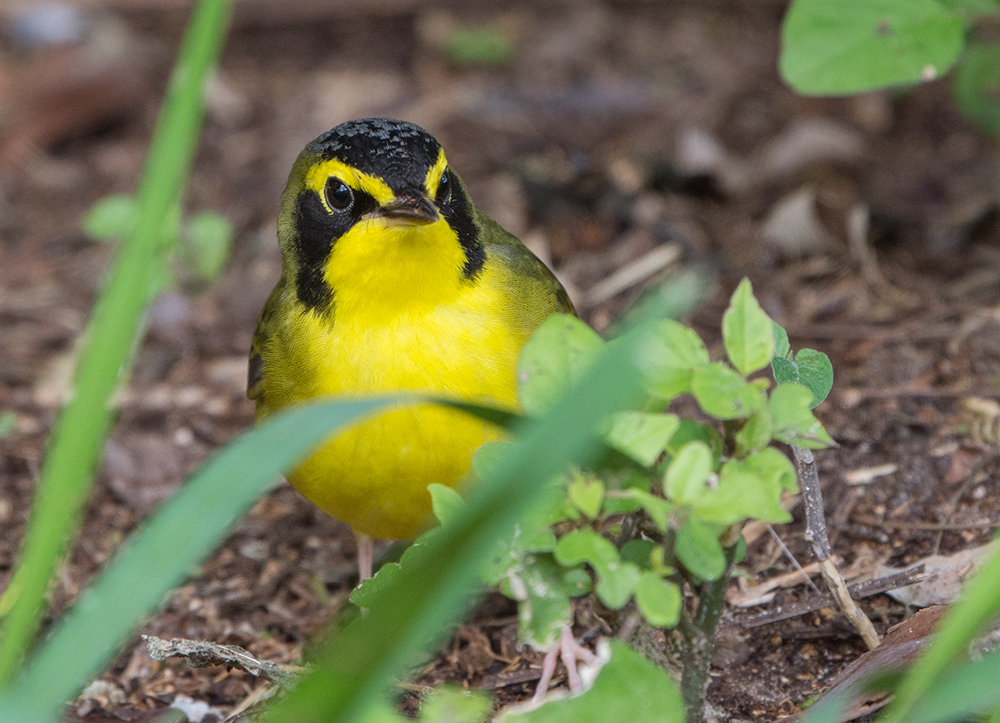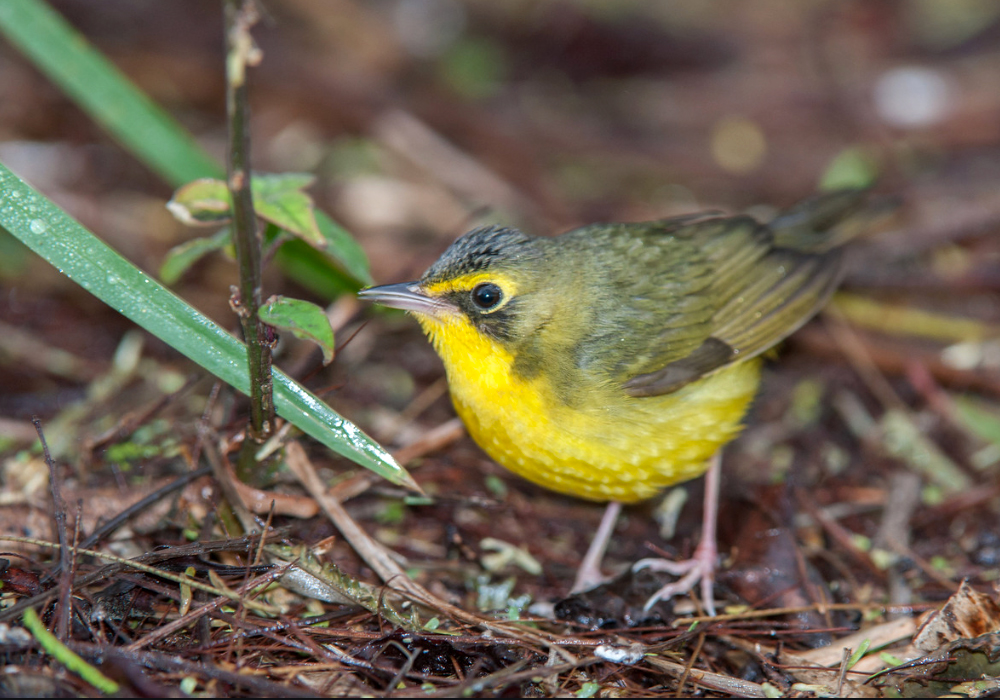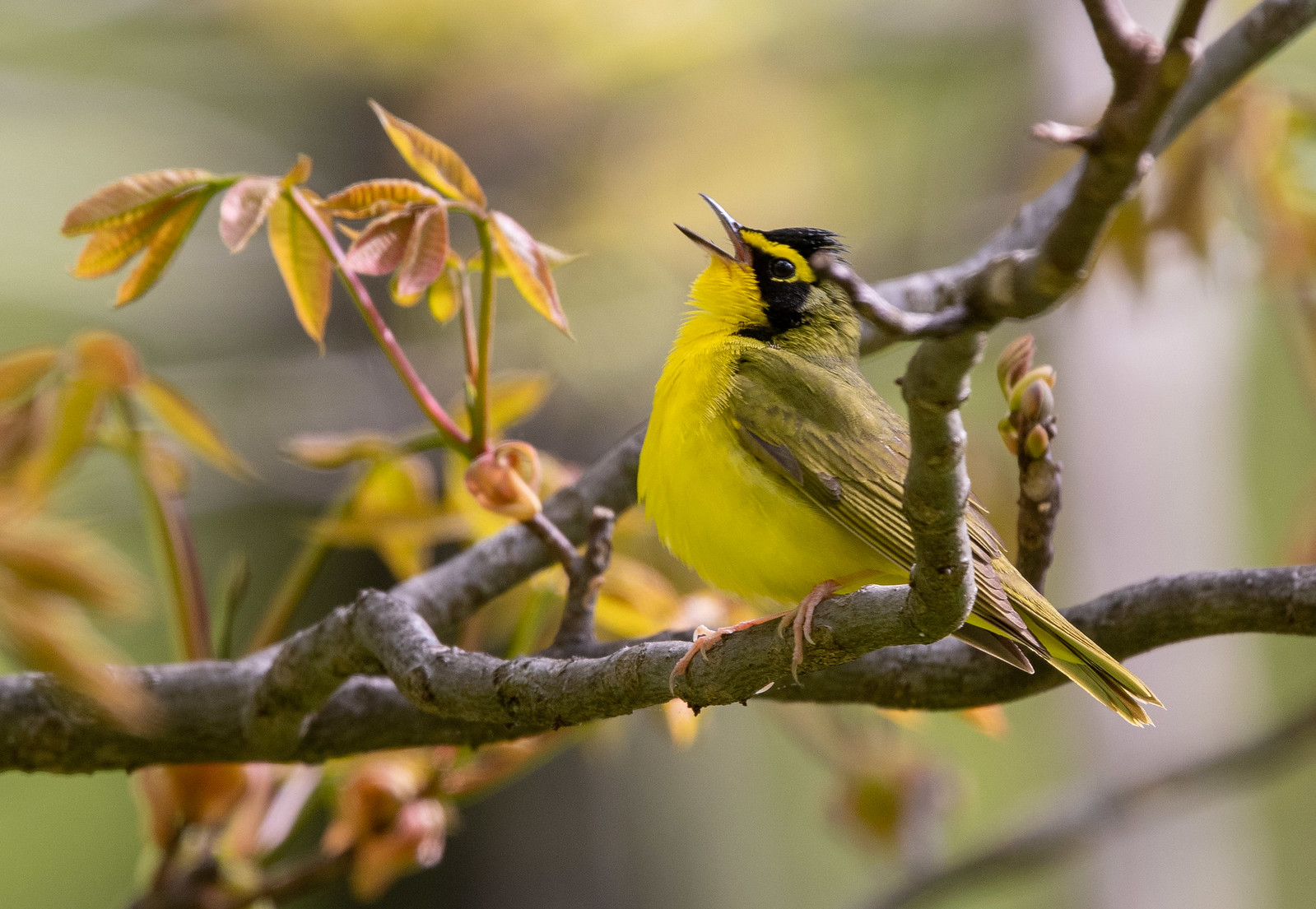| Early Spring Date: | April 24 |
| Late Spring Date: | May 23 |
| Infrequently Seen | |
Spring: Kentucky Warblers seldom show up at Monticello Park. In most years, from zero to two are recorded. They nest in the dense understory of deciduous forests, usually near water. The population of Kentucky Warblers has been declining. In past years, they have nested at Great Falls Park in Virginia and along the C&O Canal near Riley's Lock, but no longer. They still breed at Little Bennett Park in Montgomery County, Maryland.
Fall: Kentucky Warblers are rarely seen at Monticello during fall migration.
Where to See Them in the Park
Kentucky Warblers are skulkers who stay in the underbrush. They sometimes perch on a low branch and sing. Singing Kentucky Warblers can be difficult to locate, because they usually stay still on a branch while turning their head. You can watch the bird for a long time if you find one, but if the bird is nestled among the leaves, the search can be an exercise in futility.
Physical Description

Adult male Kentucky Warblers have a black head and neck with a bright golden line that runs from the base of the bill over the eye, looping around it. The back is olive with no wingbars, and the underparts are bright yellow.

If you encounter an adult male head-on, the black on the face looks like the runny mascara on some of the characters in the Rocky Horror Picture Show. Sometimes, birders mistake Canada Warblers for Kentucky Warblers because the Canada has a similar runny-mascara look.

Females and second-year males are duller than the adult male, and the "mascara" is not nearly as pronounced.
Vocalizations

The song of the Kentucky Warbler sounds like a Carolina Wren — a loud churry-churry-churry-churry.
Hear the song of the Kentucky Warbler.
Notes
Kentucky Warblers are in the same genus as the Mourning Warbler and Common Yellowthroat. They used to be in the same genus as the Connecticut Warbler, but the Connecticuts now have the genus all to themselves. Male Kentucky Warblers are unusual in that, unlike most songbird species, they appear to sing only one type of song throughout their entire life.
Origin of Names
Common Names: Kentucky from the state where Alexander Wilson found the species to be abundant. The New World Warblers were named for their similar appearance to European warblers, to whom they are not related. Most of the New World warblers do not warble (sing continuously with notes that change frequently).
Genus Name: Geothlypis means a small ground bird.
Species Name: Formosa means beautiful.
Kentucky Warbler video footage
Return to the Index
